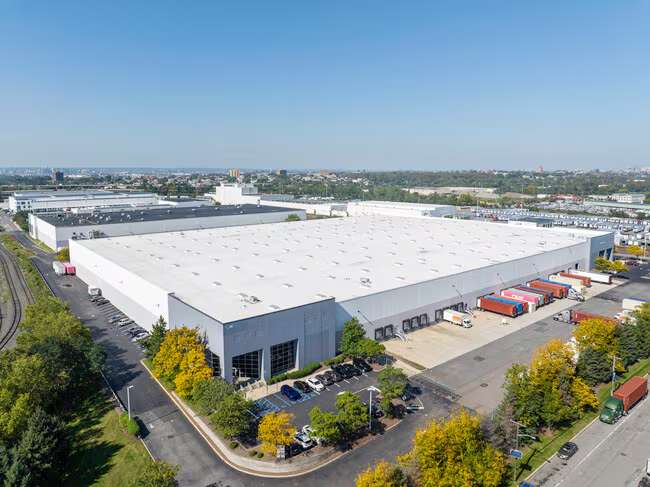New Jersey, a vibrant nexus of commerce, culture, and community, is consistently at the forefront of evolving real estate trends. From bustling urban centers experiencing transformative growth to the intricate logistics of its expansive industrial corridors, the Garden State’s property market is a dynamic and compelling story. At Explore New Jersey, we’re dedicated to bringing you the most insightful and up-to-date perspectives on these vital developments, shaping the very fabric of where we live and thrive. For those eager to delve even further into the latest market analyses, groundbreaking projects, and expert opinions on New Jersey real estate, we invite you to explore our dedicated category at https://explorenewjersey.org/category/real-estate/.
Navigating the Residential Market: A Seller’s Advantage Continues
As we move through 2025, New Jersey’s residential real estate market continues to favor sellers, a trend that has persisted due to a compelling interplay of factors. While there’s been a slight uptick in new listings compared to previous years, overall inventory remains below pre-pandemic levels. This persistent scarcity, coupled with strong buyer demand, means that homes are still moving quickly, often under competitive conditions.
The median home sale price in New Jersey has seen steady appreciation, reflecting the ongoing strength of the market. Buyers, particularly in high-demand areas, should be prepared for a swift pace and understand that having pre-approved financing is more crucial than ever. While mortgage rates have hovered in the mid-to-high 6% range, forecasts suggest a gradual easing throughout the year, potentially offering a bit more breathing room for affordability.
Interestingly, regional variations within the state are quite pronounced. While some areas might experience intense bidding wars, others may offer a more balanced environment. For instance, the South Jersey Shore market, encompassing Atlantic and Cape May Counties, is showing robust activity with increased buyer interest and stable prices, especially for desirable waterfront properties. The median days a home spends on the market has notably decreased since the beginning of the year, indicating a healthy velocity in transactions. This diversity across New Jersey means that both buyers and sellers can find strategic opportunities by focusing on specific local markets.
The underlying strength of New Jersey’s job market, fueled by thriving sectors like finance, pharmaceuticals, and technology, continues to drive housing demand. A growing population of millennials and Gen Zers entering their prime homebuying years also contributes to the sustained need for housing, including rental properties. While experts predict continued home price growth for the foreseeable future, the pace is expected to be more moderate than the rapid surges of recent years. This suggests a market that remains strong but with a return to more sustainable growth, offering a stable environment for long-term investment.
Industrial Powerhouse: Strategic Logistics and Evolving Dynamics
New Jersey’s strategic location, with unparalleled access to major ports, transportation networks, and dense population centers, firmly establishes it as a critical hub for industrial real estate. This sector plays a pivotal role in the state’s economic engine, facilitating the movement of goods and supporting the ever-expanding world of e-commerce.
While the industrial market entered 2025 with a somewhat slower pace of leasing activity compared to late 2024, influenced by broader economic uncertainties and ongoing tariff discussions, New Jersey continues to lead the nation in industrial sales volume. In the first quarter of 2025, the state recorded an impressive total of $832 million in industrial sales, a significant increase from the previous year. This demonstrates a strong appetite from investors who recognize the long-term value and strategic importance of New Jersey’s industrial assets.

The average asking rent in the industrial sector has seen slight declines, and the overall vacancy rate has stabilized, a comforting sign after quarters of increases. This indicates that new construction starts have slowed down, allowing demand to catch up with the significant influx of new supply seen throughout 2023 and 2024. Despite these shifts, New Jersey still commands some of the highest industrial sale prices per square foot nationally, a testament to its prime logistical position.
A notable trend is the increasing momentum in “user-sales” for warehouses, where companies are opting to purchase facilities rather than just lease them. This strategic shift is driven by a desire for long-term cost control, stability, and ownership in a market where rents have risen. Furthermore, Asian-supplied third-party logistics (3PL) firms continue their expansion, highlighting the ongoing importance of global trade and port-adjacent facilities in New Jersey’s industrial landscape. The Port of New York and New Jersey, a crucial gateway for international trade, started 2025 with strong import volumes, further reinforcing the region’s enduring strength as a logistics backbone.
Urban Transformation: Mixed-Use Developments Reshaping Communities
Beyond the individual sectors, New Jersey is witnessing a renaissance in mixed-use developments, particularly in its vibrant urban centers. These projects are not just about building new structures; they are about reimagining cityscapes, fostering community, and creating integrated environments where people can live, work, and recreate seamlessly.

Jersey City continues to be a prime example of this urban evolution. A significant $400 million mixed-use development, encompassing 670 new residences and three new storefronts in the SoHo West neighborhood, recently broke ground. This project is poised to be a major catalyst for the area, blending residential living with retail and commercial spaces. Such developments provide much-needed housing, support local businesses, and contribute to the walkability and vibrancy of urban life. The integration of extensive amenity spaces, including co-working areas, fitness centers, and recreational facilities, caters to the modern urban dweller seeking convenience and a high quality of life.
Another significant development in Jersey City is the groundbreaking of the first building in the Bayfront Redevelopment Project. This initiative is particularly noteworthy as 80% of its units will be dedicated to affordable and workforce housing, marking a historic commitment to equitable development. This demonstrates a growing recognition of the need for diverse housing options within urban growth strategies.
Newark is also experiencing its share of transformative mixed-use projects. The approval of Mulberry Pointe, a 1,008-unit residential high-rise near Newark Penn Station with ground-floor retail, signifies continued investment in the city’s transit-oriented development. Similarly, the leasing of 116 units at Hue Soul in East Orange, a transit-oriented development near NJ TRANSIT’s East Orange Station, further illustrates the trend of building in areas with excellent connectivity.
These large-scale projects are more than just statistics; they are tangible representations of New Jersey’s ongoing commitment to growth, innovation, and enhancing the lives of its residents. They bring new jobs, create dynamic spaces, and contribute to the overall economic vitality of the state.
The Future of New Jersey Real Estate: Adaptation and Opportunity
The real estate market in New Jersey is characterized by its adaptability and persistent opportunities. While challenges like economic uncertainty, fluctuating interest rates, and construction costs will always be part of the landscape, the underlying demand, strategic location, and continuous investment in infrastructure and community development paint a picture of continued strength.
The Great Debate: New Jersey’s Proposed Realty Transfer Fee and Its Impact on Homeownership
New Jersey, a state known for its vibrant communities and diverse housing market, is currently at a crucial juncture as its Fiscal Year 2026 (FY2026) spending plan moves through the legislative process. This robust $58.8 billion budget, reflecting a significant increase over the previous year, includes a proposal that has ignited considerable discussion across the Garden State’s real estate sector: an adjustment to the real estate transfer fee for higher-value homes. At Explore New Jersey, we believe in providing our readers with a clear, balanced understanding of policies that directly affect their homes and financial futures. For a deeper dive into current market trends, property insights, and all things real estate in New Jersey, be sure to visit our comprehensive guide at https://explorenewjersey.org/category/real-estate/.
The proposed change centers on increasing the real estate transfer fee for properties sold for more than $2 million. Under this new plan, sellers of homes at the $2 million mark would face a $20,000 fee, with a further 2.5% increase applied to properties selling between $2.5 million and $3 million. This proposed fee hike is more than just a line item in a budget; it represents a philosophical divide on how best to address New Jersey’s persistent housing affordability challenges.
The Argument for Affordable Housing Investment
Proponents of the increased transfer fee, such as policy analysts, view this measure as a strategic and necessary step. Their argument is rooted in the current housing climate, where many New Jerseyans, particularly those with low and moderate incomes, are struggling to find affordable places to live. A significant portion of the revenue generated from existing realty transfer fees already funnels into affordable housing initiatives. By increasing these fees on high-value transactions, the state aims to bolster these crucial funds.
From this perspective, the additional cost falls on a segment of the market – typically the top 15% of home sales – that is perceived to be more capable of contributing to solutions for broader societal needs. The underlying goal is to ensure that New Jersey remains a place where people from all economic backgrounds can afford to reside, fostering greater equity and opportunity across the state. This approach seeks to leverage the state’s robust, high-end housing market to support a more accessible and inclusive housing landscape for everyone.
Concerns from the Real Estate Community: A Potential Market Dampener
However, the real estate industry, including organizations representing realtors and builders across New Jersey, expresses strong opposition to the proposed increase, warning of significant negative repercussions. Their concerns stem from a belief that while the intent may be to address affordability, the actual impact could be detrimental to the broader market.
Many in the industry argue that the definition of a “luxury” home, particularly a “million-dollar home,” has evolved dramatically in New Jersey. Due to consistent property value appreciation, what was once considered a high-end property in some areas is now increasingly becoming a “middle-class home.” This means that the increased fee, initially perceived to target only the wealthiest transactions, could ultimately affect a much wider range of average New Jerseyans looking to sell their properties.
Industry leaders voice apprehension that imposing a higher transfer fee could create a “pause” in the market. Sellers might become hesitant to list their homes, and buyers might be discouraged by the added costs involved in a transaction. This hesitation, they contend, could slow down an already competitive market, potentially reducing the overall volume of home sales and impacting the vitality of the real estate sector as a whole. A sluggish market can lead to longer listing times, fewer transactions, and even, in some cases, downward pressure on prices, all of which could ultimately diminish state revenue derived from real estate.
Furthermore, from the perspective of builders, adding another layer of cost to real estate transactions does not align with efforts to increase affordability. They argue that such fees can indirectly contribute to higher overall housing expenses, working against legislative goals of making housing more accessible. Builders are already navigating complex challenges, including rising material costs, labor shortages, and intricate regulatory landscapes. An increased transfer fee adds yet another financial burden that could impact the feasibility of new construction projects, potentially hindering the creation of much-needed housing supply.
The Ongoing Dialogue: Shaping New Jersey’s Housing Future
The debate surrounding the real estate transfer fee highlights the ongoing tension between generating revenue for vital social programs and ensuring a healthy, dynamic housing market. It underscores the complex policy choices facing New Jersey as it strives to maintain its economic strength while addressing critical social needs. The state’s commitment to expanding affordable housing and providing property tax relief remains a high priority, but the methods for achieving these goals are subject to intense scrutiny and diverse viewpoints.
As the FY2026 budget moves toward finalization, the outcome of this specific real estate transfer fee proposal will undoubtedly shape market dynamics in the coming year. It will be a testament to how New Jersey chooses to balance the aspirations for greater affordability with the economic realities faced by homeowners, sellers, and the real estate industry itself. Whether you’re considering buying your first home, expanding your business’s logistics footprint, or simply observing the exciting changes in our urban centers, understanding these trends is key. At Explore New Jersey, we are committed to providing you with the insights you need to navigate this exciting and ever-evolving real estate world in the Garden State. Keep an eye on https://explorenewjersey.org/category/real-estate/ for the latest updates and analyses that truly matter.











